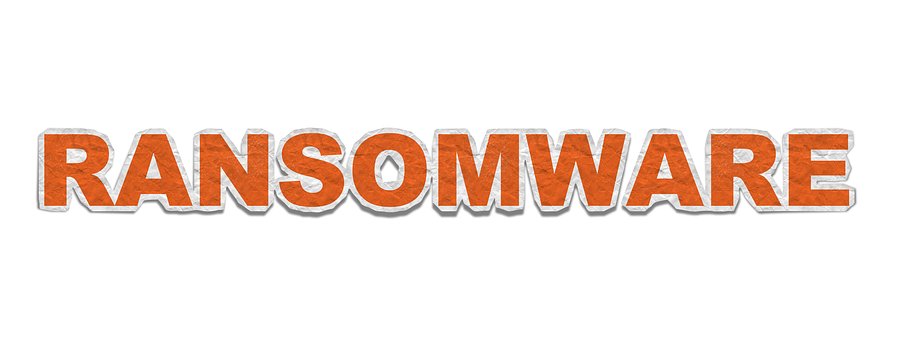
What is Ransomware?
It is best described as malicious software that will block your access to files in the computer or laptop. In recent times, the threat of ransomware has increased all over the world. And it is quite alarming that many cases are not reported to the authorities because of fear of loss of name. Now let us focus on 10 most dangerous ransomware attacks in the last 10 years.
1.Ransomware WannaCry
The year was 2017, and in the first half of the year, the ransomware first hit computers in the UK. It asked for payment in Bitcoins. The program exposed the vulnerabilities in Microsoft software. But true to its name, it bled many institutions and companies in the US and other countries. As per a business survey, many cases may not have got reported to the authorities.
2. Ransomware NotPetya (2017)
It was the Ukraine and Netherlands which first got affected. Slowly this ransomware spread to Britain, Spain, entire Europe, and even the US. And even Ukraine’s national bank got affected. This ransomware spread via a vulnerable segment in Microsoft software. It was a clone from the Petya ransomware, but the demand for ransom was low. The entire data on the hard disk got affected because of NotPetya.
3. Ransomware Petya (2016)
Other than Cryptowall, if there was another ransomware which caused loss of millions of dollars, it was Petya. This ransomware made the computer unusable till you pay the ransom.
4. Ransomware LOcky (2016)

It was the first time that a medical institution security system in the US got compromised because of this ransomware. The amount paid was 17,000 US dollars for the encryption key. The malware was spread in a relatively new type, where the victim had to download a Word Macro disguised as an invoice. If the user clicked the macro, then the malware got downloaded and encrypted the data, and demand ransom.
5. RansomwareCryptolocker
When you just look back at the years of 2013 and 2014, you will find the name CryptoLocker stands high among the ransomware list. Unlike the olden times, this was the first time the creators earned money for designing ransomware. And the amount as per a survey was a cool three million in dollars.
But the threat was still lingering on the internet. Clones appeared, most notably, by the names of TorrentLocker and Cryptowall. And as per records, maybe, the success of CryptoLocker made the ransomware designers think that they can target even value-added establishments such as banking and even Government sectors.
6. Ransomware CryptoWall
Check the records between 2014 and 2016. It was Cryptowall which was the most famous clone of CryptoLocker. This ransomware targeted businesses and individual computers. As per a survey, nearly 18 million dollars passed on to the designers of this ransomware.
7. Ransomware TeslaCrypt (2015)
This ransomware was also a break from the Crytolocker. But this malware was different. It targeted files which were associated with video games, downloadable content and more. Since these files were precious to hardcore game enthusiasts, they were stored in the drive. The ransomware got continuously improved by the designers, so the restoration became totally impossible. But due to a change of heart, the designers suddenly stopped their activities and offered the key to the entire globe.
8. Ransomware SimpleLocker (End Months of 2015)
This was one among the ransomware which spread to android mobiles. Since everyone started preferring mobile rather than browsing on computers and laptops, the scammers also targeted mobiles. It was in the year 2015, that this ransomware spread. Without the encryption key, it was impossible to access files devoid of help from scammers.
9. Ransomware TorrentLocker (2014)
This ransomware was also a part of CyptoLocker code, and it spread by email attachments. Similar to many ransomware, it spread through regular channels, such as email attachments or by giving links of downloadable files. The payment stated in the tune of 550 US dollars via Bitcoin. But the change was the price will increase after three days.
10. Ransomware Reveton (2012)
It was the year 2012, and the spreading was done with great precision. The Police Trojan, as was also called, came to the mail of unsuspecting victims stating unlicensed software is present in the system. Once opened, the system became blocked and it was only payment of fees via various channels that the files can get access.
Ransomware Archievus (2006)
The ransomware first made its appearance as per the official records in 1998, but it was in 2006, that the first proper step to ransomware was written. The name of the ransomware was Archievus, and it targeted only Windows users. The My Documents folder was the first to get affected. And if a person got affected, he/she was blackmailed to make purchases from various online sellers before getting the key for decryption. But, the password did not differ much from one victim to the other, and within some time, the term got published. Victims made use of the password to recover their data.
Lesser Known Ransomware

1.Ransomware Ryuk
It was in the month of 2018, that the attack started and it went by the name of Ryuk. This ransomware netted about 6 lakh dollars from the victims for the designers. It disabled the entire Windows System Restore option for the victims. And so you would have to pay the price for the encryption key.
2. Ransomware GandCrab
This malware first made its appearance in Jan 2018. And the fee of ransom was nearly 500 pounds for the encryption key or return of files. As per a security firm, this ransomware was given as a service package to persons who desired to be hardcore ransomware professionals. Once they got the money, they have to share the profits with the designers in the range of 60 to 40.
3. UnKnown
To be precise, the date was 26 July 2017. This ransomware attacked a medical center in the US. Although it did not affect the patient base of the computer, other documents such as image files (X-rays) got affected. And the other information such as future appointments became inaccessible.
4. Ransomware Reyptson
The month was July 2017 and it was the month that the ransomware struck. It spread via email having a false invoice document.
5. Ransomware LeakerLocker
This ransomware also made its appearance in the same month as the previously mentioned title. This malware locked the home screen and caused fear in the victim’s minds by informing it has access to every email address, text messages, and calls. Unless the ransomware is paid, the data will get shared online.
6. Ransomware WYSIWYE (April 2017)
The full form is What You See Is What You Encrypt. The procedure used was the Remote Desktop Protocol (RDP) brute force attack. In this method, the ransomware hackers scan the entire web for the availability of open RDP servers. In case they find the availability, an online tool is used for trying many password combinations to steal the credentials. And then the ransomware gets transferred to the target computer.
7. Ransomware Osiris
The date was 12 December 2016. And the victim was a law enforcement agency. The ransomware was received via a fake department address. This virus caused encryption of Microsoft Excel and Office documents along with videos and photographs. The demand was 4000 US dollars in Bitcoin.
8. Ransomware Cerber
It was in the time of 2016 to 2017 that this crypto-malware struck. Many of the Microsoft OS was affected by this ransomware. Similar to CryptoLocker, you can find various clones of Cerber on the internet.
9. Ransomware BadRabbit (October 2017)
Similar to NotPetya and WannaCry, this ransomware also made use of the Microsoft OS for targeting mainly Russian as well as Ukrainian organizations. But as per reports, countries such as some parts of the US, South Korea, and even Poland got affected. The threat was named as BadRabbit.
Conclusion
All said and done. Yes, you have gained enough information on ransomware, but the threat still lurks large over the horizon. Anytime, anywhere, a smart mind can unleash ransomware to the entire world. So it is necessary to have the best antivirus antispyware software in your system.
And yes, there is one factor which assumes prominence. Maintenance service for your computer or laptop at least once a year. Let us imagine, you are in Mumbai, and have a computer or laptop at home, which the children use for games or project purposes. One day, they complain about the performance of the computer has gone slow. When you check, you find numerous unwanted programs running in the background. You delete some programs, make use of free antivirus software but still, there was no change. So, the situation calls for the assistance of the best computer repair engineer. And how will you get one? Download the app of the best company offering home appliance repair service in Mumbai. These companies will also have technicians skilled in computer repair service in Mumbai on their payrolls. Check their app, select the best techie near your home and ask him to come to fix the system at your own time. Since these professionals are educated and highly qualified, you can trust them with your computer. And they can solve any problem with ease.
Have you read the article on the famous ransomware that created mayhem in the business world? Want to get more updates? Check our newsletter for more updates.








